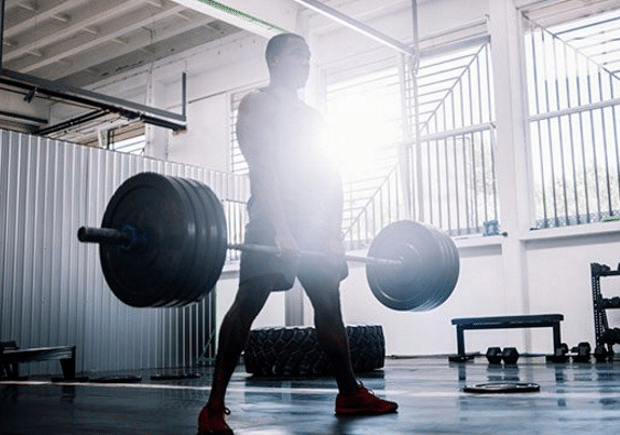We all know that hitting the weight room is a smart endeavor for most athletes—especially those who belong to explosive, powerful sports like basketball, hockey, football or track. But there’s something that needs to be brought to the attention of coaches and athletes alike when it comes to sport specific training.
Heavy Weight Lifting
Too often, athletes in the weight room get fixated on how much progress they’re making in the gym using only one metric: The amount of weight they lift in each exercise. In theory, that’s perfectly normal and mostly right. But theory also excuses a few variables that we take for granted. For example, it implies that the form and technique for each weight progression is acceptable, and nothing breaks down technically.
We don’t have to look too deep to realize that the reality of the situation sings a far different song. Especially when videos like this exist online:
Athletes who don’t know much better become entrenched in the thinking that the heavier you go, the stronger you are, meaning the better you’ll be, and sometimes the coaches reinforce this thinking without considering the quality of the repetitions in question. A good thing to consider: would you rather perform a 500-pound Squat using a questionable, haphazard rep with a short range of motion and risk injury? Or would you rather perform a 350-pound Squat with perfect form down to the last detail? If you chose the latter, you’re in the right head space.
Not the weight you can lift, the weight you can own
An injury on the playing field or court doesn’t take the time to consider your PR before sending you to Snap City. With that said, you shouldn’t continue your risk for injury by narrowly escaping an accident by the way you perform your exercises in the weight room—that’s the place where you should be bulletproofing yourself for the long season and many more to come. Doing this comes down to more than just lifting with good form in general. It comes down to examining the way you’re performing each individual rep as it fits the demands of your sport.
For power sports like the ones I listed at the outset, a key takeaway from training is to be more explosive under safe training protocols and programming directives. But a muscle can’t be trained to be more explosive with weights if it can’t quiet them down first.
You’re probably wondering what that means. I’m talking about deceleration.
Being able to slow down or stop an object in motion is much more demanding on the tendons, ligaments and type-IIB muscle fibers which are responsible for your strongest and most explosive capabilities. Being able to jump high means nothing if you don’t know how to properly land and absorb that impact. Training to do just that can be a quintessential aid in helping an athlete jump higher.
To bulletproof yourself from injury and condition your muscles more appropriately, focusing on owning the weight you lift should come first, before anything else. Instead of coaching an athlete to squat 400 pounds once, make him show you all the things he can do with 275. I can think of a few:
- Use controlled 4 second negatives with 275
- Come to a complete pause with 275
- Do more than 1 rep with good form with 275
The benefits of making light weight feel heavy transcend any other methods of weight training for a number of reasons: First of all, it better connects the mind to the muscles due to the amount of mental attention and focus needed to create the desired training effect. Second, since the implement is lighter in general, there’s less taxation on the muscles and joints, making for a safer environment and one that’s much more repeatable and useful over a long season (and offseason). Third, it puts PRs in a new light, and generates a new perspective and respect for them. An athlete boasting slingshot-style shoddy squat PR with 400 pounds is worth investigating what he can lift with the form and cues described above (maybe it’s only 300)—then backtracking and making that his new standing PR.
Wrap-Up
You can only lift as much as you can lower, and you’re only as good at jumping as you are at landing. Paying attention to deceleration, eccentric loading and the use of good form is a sign of a smart coach and lifter. Of course, there are times to push ourselves, but those should be few and far between when compared to the times we put “beast mode” on the back burner and instead focus on the quality of the little things. As athletes mature, those little things will play a bigger and bigger role in the longevity of his sport career.
Read the original article in Stack.com by Lee Boyce
Lee Boyce is a strength coach based in Toronto who works with strength, sports performance and conditioning clients. He contributes to many major magazines, including “MUSCLEMAG,” “Men’s Fitness,” “TNATION” and “Men’s Health.” A former university level sprinter and long jumper, Boyce is the owner of leeboycetraining.com. Follow him on Twitter.

